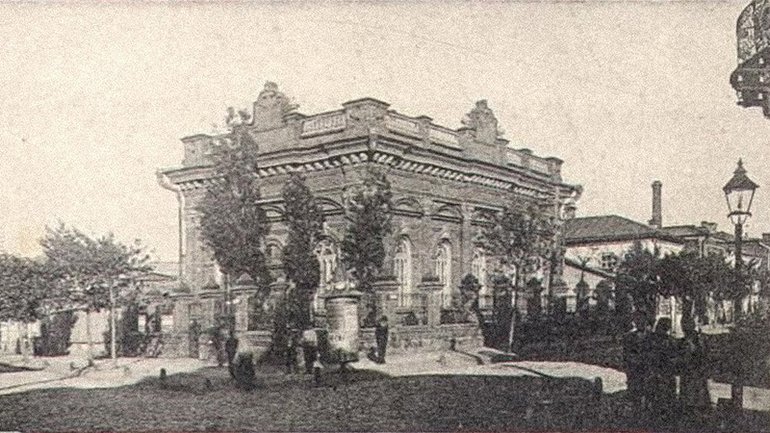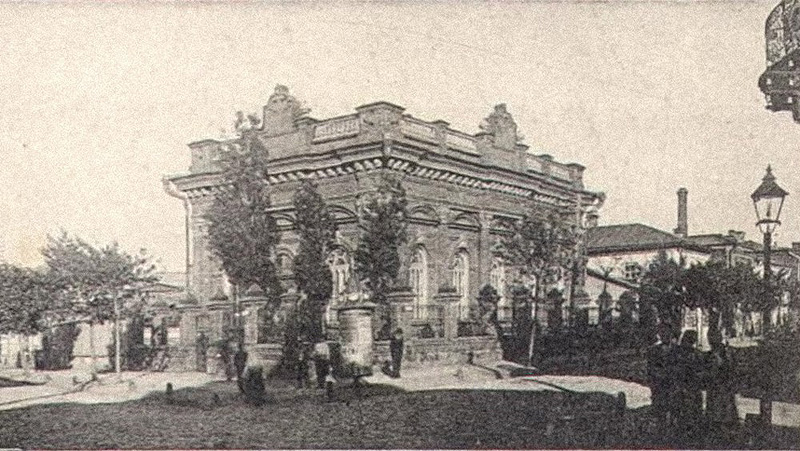Keepers of Sloboda Menorah. About the past and the present of Kharkiv Karaites

People inclined to associations would identify the word Karaite mainly with the Crimean peninsula. And it is a fair association. For Karaites from different regions of the country and the whole of Eastern Europe are descendants of people coming exactly from Crimea. They settled in Kharkiv in the 40-s of the 19th century and became pioneers of tobacco industry in Kharkiv. In the beginning, there were 10 Karaite families in the city, in 1897, there were already 207 persons, and by 1901, Karaites made up 0.2 % of the city’s population.

Once Karaites settled down in the new place, they began to organize their religious life. The first kenesa in Kharkiv was established in 1853 in Podilskyi Lane, in what is now known as Izmailovs’ House, in the vicinity of Podilskyi Bridge and the picturesque banks of Kharkiv River. The word kenesa is derived from the Hebrew “ben keneset,” the house of assembly, from which also the name of the Jewish parliament, Kneset is derived. Its Greek synonym is synagogue.
The modern Kenesa building was constructed in 1891-1893 according to a design by the eparchial architect Borys Pokrovskyi at the corner of Podilskyi Lane and Kuznechna Street. 36 Karaite families donated to the construction. Karaite religious culture is known for its specificities such as the fact that Karaite kenesas resemble Jewish synagogues and Muslim mosques, to some extent, as kenesas in our regions are oriented to the south (towards the Holy City), and their architectural decorations include oriental motifs. The prayer hall was to be entered with shoes off, men wore fesk hats, women also covered their heads (the tradition is live today). Men and women prayed separately, a balcony was equipped for women, under which there were benches for old men for whom it was difficult to sit on carpets in the hall. However, none of the traditions were borrowed from Islam. All these things were based on Torah and the tradition that can be traced back to the Temple of Jerusalem.
The first man to serve as the Gazan of the kenesa in 1863 was a merchant, rabbi Abraham Kapon. By the way, in the end of the 20th century, a descendant of Abraham Capon, Valentyn Capon-Ivanov had a difficult task to restore the community. Karaites love strong family traditions. According to Karaite traditions, any man of Karaite faith who knows the order and procedure of the service, the language of the Holy Scripture and is respected by the community can be a Gazan.
From the spiritual leaders of Karaites, Mordehai Fenerli stands out. He was a Gazan from 1899 to March of 1917. At the time of the notorious Beilis’ case, Gazan Fenerli came forth boldly in the press to protest the ungrounded “bloody slander” with respect to the Jews; and was an honorary guest at the ceremony of opening of a synagogue near the kenesa. A collection of his sermons is stored in Saltykov-Shchedrin Library in Saint Petersburg. One should also mention his successor, Yakov Shamash who mentored Karaites from 1917 to 1929, when the kenesa closed down. His name was known far outside Kharkiv thanks to his short cathechesis for children which by now is translated into many world languages. The teacher of the faith died in a Soviet prison in 1940-s.
The Karaite community was dispersed by the Bolshevik authorities in 1929. The building was used to house a museum club Militant Atheist and, later, other Soviet offices. Everything associated with religion was removed: the interior space was divided into two floors, Tables of the Covenant and Star of David were removed from the cornice and the fence was disassembled.
A few kilometers to the west of the kenesa, a cemetery was located at a plot bought by the community. Karaites used to have separate cemeteries or at least sections of cemeteries and buried their dead according to their own traditions: in particular, Karaite burial places are known for northern orientation of the bodies. Karaite Lane led from Katerynoslav Street (now, Poltava Shliakh) to the cemetery. There is no trace of the lane today apart from a passage between multistoried buildings. The Karaite cemetery on Cold Mount was destroyed in 1930-s-1940-s. The grave stones were stolen and a children’s playground was established there.
The commandment to love one’s neighbor is one of the most important commandments of Torah. Charitable societies of the Karaite communities served to fulfill it. In the beginning of the 20th century, there was a Karaite charitable society located in Gogol Street. Its head, S. Manhubi let it use his own house. The half-ruined building is still there. Manhubinska Street named after the known Karaite family from Manhup-kale Fortress in the Crimea is not found on the city map any more.
The Kharkiv community of Karaites was never numerous but there were quite a few Karaites among outstanding city citizens. Let us mention some of them.
Mark Kalfa, a merchant of the 2nd guild, Karaite industry man and land owner, founder of the tobacco factory Kalfa in Kharkiv. From 1893 to 1898, he was a glasnyi of Kharkiv City Duma and a member of the city conservative party. From 1893, he was a gabai (elder) of the kenesa and his service was unpaid. According to Gazan M. Fenerli, M. Kalfa diligently worked as he held the post, increased the income of the kenesa, the new building of which was constructed with his direct participation. He contributed to that with his donations and constant care for what he was elected gevir (head) of the Karaite community of Kharkiv. Also, M. Kalfa spent substantial funds for the needs of Alexander’s Karaite Spiritual School in Eupatoria which was the only higher education institution in the Russian Empire to train Gazans. He allocated considerable funds also to restore Karaite historic monuments in Chufut Kale, to construct a museum of Karaite History there, to help the poor and meet the needs of Karaite Yardym hospice. When WWI began, he personally participated in organizing the reception of refugees from war-effected areas, and provided considerable material aid to them. M. Kalfa was awarded with a gold medal with Stanislav’s ribbon for his contributions to the society and charitable activities.
An outstanding engineer Daniel Cherkez, who built several bridges and water drainage system in Kharkiv, and a theater producer Michael Avakh, co-author of libretto and stage manager of many works, in particular, the famous operetta Wedding in Malynivka, which appeared on Kharkiv stage in 1937, also came from Karaite community.
Kharkiv Karaites also remember Valentyn Kapon-Ivanov. He was a composer, conductor, honored culture worker of Ukraine, teacher, author of opera, symphonic, chamber, variety art and theatre works and, perhaps, the only person in the world to compose modern Karaite music. From 1990-s, he was busy restoring the local community and was its president for many years. Thanks to his efforts, the old kenesa was returned to the Karaites in 2006.
The city’s Karaites has always included workers of science, culture, art, teachers, doctors and other specialists. These people have been useful for the country and brought it fame.
Nowadays, Kharkiv Karaite community preserves ancient traditions of the faith of the Prophet Moses despite the hardships of the modern age, nearly full assimilation and the crossed desert of 70 years. Today, services are celebrated in the kenesa on Saturdays and holydays, Torah is being taught. There is a museum room there and excursions are organized to Karaite sights of Kharkiv. In total, about 50 Karaites live in the capital of Slobozhanskyi region (Kharkiv). Since the sad events of 2014, the connections with their historic motherland in the Crimea have been very limited. It became impossible to visit the peninsula. The Kharkiv kenesa is now the only active Karaite prayer house outside the Crimea, in Ukraine. Despite its own problems and small numbers, after the beginning of the war with Russia, the community provided aid to refugees from the Crimea and Donbass regardless of their religious and national identity, for the Law of God commands one to love a stranger as oneself. A pleasant tendency of the recent years is that people of various ethnic origins have been showing interest for the Karaite faith increasingly often and the community began to be slowly enlarged from the outside. However, to be frank, the fire of Karaite religious life at the banks of River Kharkiv is glimmering rather than burning. However, Karaites are not at all losing faith in their future.
A Ukrainian philosopher Hryhoriy Skovoroda called Kharkiv a city of Prophet Zachariah and compared it to the light of menorah. Kharkiv Karaites have lived in its light for over 1.5 centuries keeping it and themselves live.









